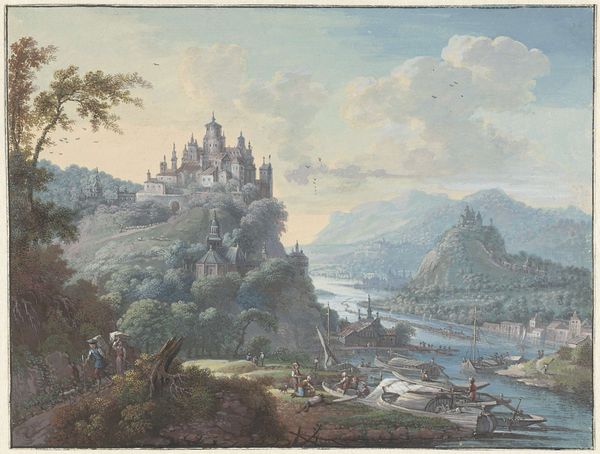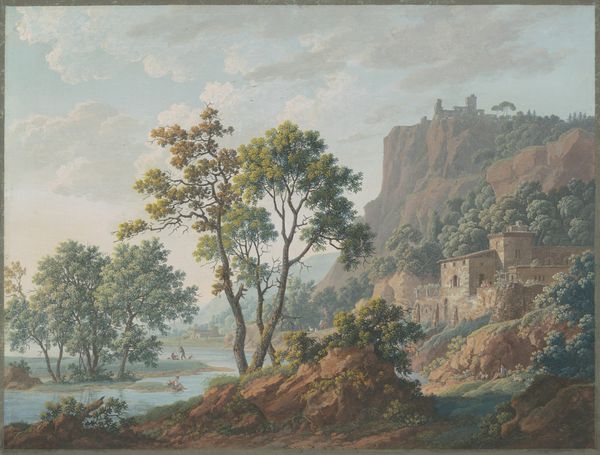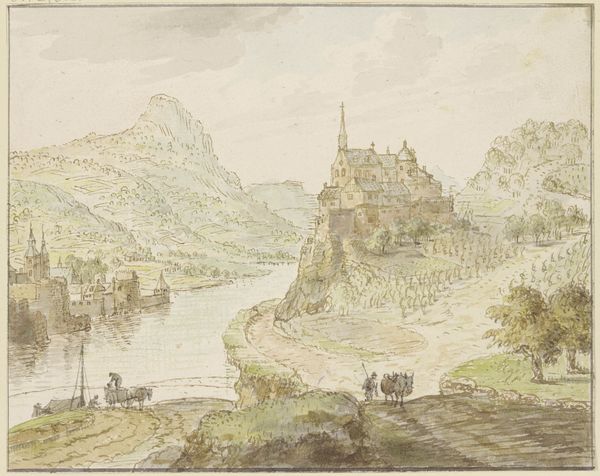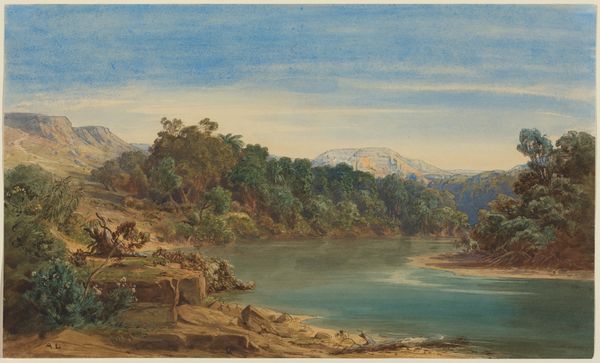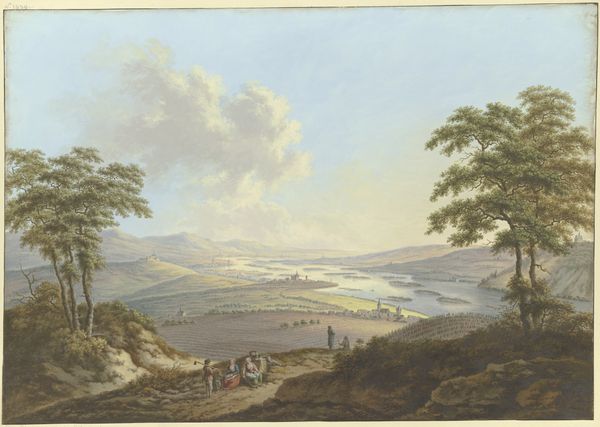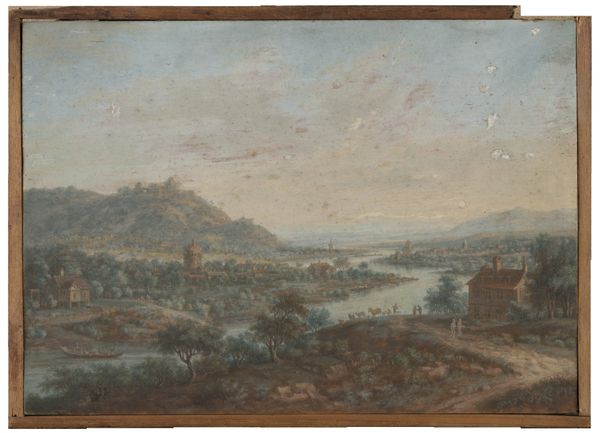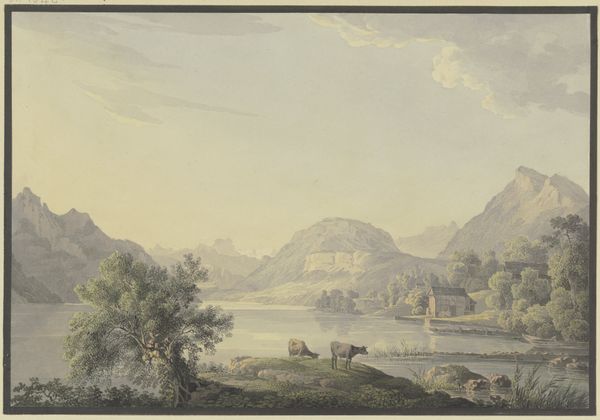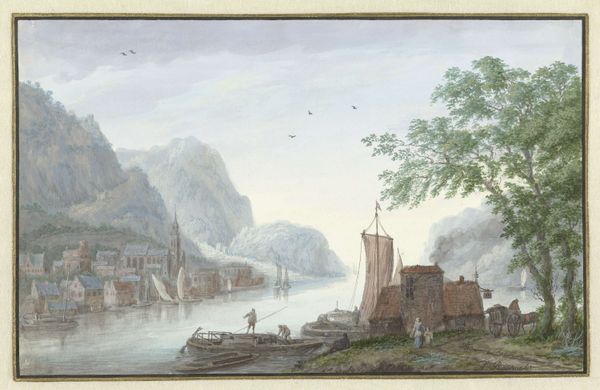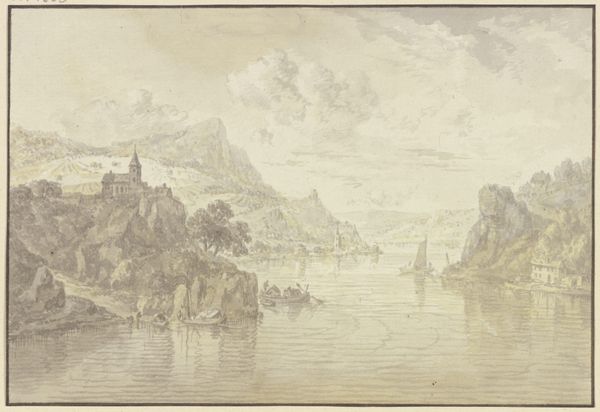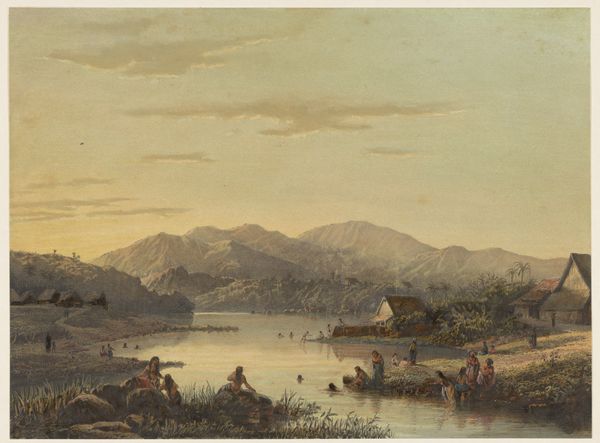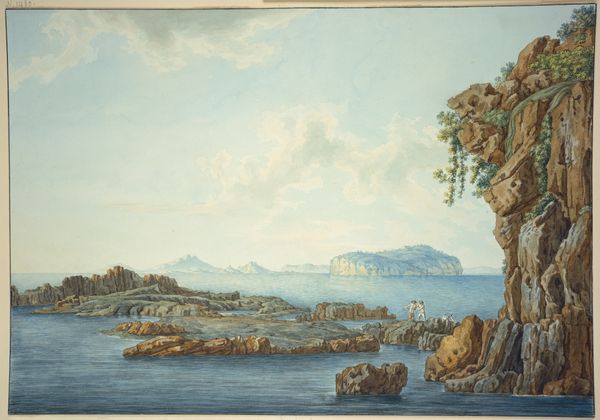
watercolor
#
fairy-painting
#
landscape
#
oil painting
#
watercolor
#
cityscape
#
picturesque
#
watercolour illustration
#
rococo
Dimensions: height 143 mm, width 190 mm
Copyright: Rijks Museum: Open Domain
Curator: Willem Troost’s “Rivierlandschap,” thought to have been created between 1694 and 1752, presents us with a quintessential picturesque scene rendered in watercolor. Editor: The first thing that strikes me is its almost dreamlike quality. The colors are so soft, and everything feels very still, very staged, despite depicting everyday life. It is giving almost a Romantic era sensibility but set maybe a little earlier. Curator: It's a meticulously constructed panorama. Troost strategically places figures and boats, framing the majestic scenery beyond. There is something to be said here of the idyllic image being a constructed perspective and how it can tell a specific narrative about power, place and even a burgeoning tourist gaze during this time. Editor: The class implications here are significant, yes. A scene like this naturalizes wealth in the landscape, doesn't it? The leisure, the architecture dominating the heights—it all says something about who has access to beauty and power. How interesting too that its watercolor! Often deemed a more gentle, feminine style compared to oil. Curator: And that speaks to a change happening culturally! Watercolor landscapes like these were popular among aristocratic tourists on the Grand Tour. These were documents and keepsakes that reinforced the taste for classical antiquity and these curated images. Editor: A taste available only to a select few. The common laborer isn't in the castle or enjoying this majestic scene on some grand vacation! Curator: Right. Now, beyond the socio-political context, the painting itself also warrants exploration. How do you read the spatial organization here, particularly the way he handles perspective and the transitions between foreground and background? Editor: There's a clever use of layering; that mountain feels both far away and somehow a central focus. The artist skillfully compresses space while also emphasizing distance. Perhaps creating a bit of desire from the observer. I too would like to experience such splendor, that seems to suggest something about privilege in access and being included in a picturesque society. Curator: The use of light plays a huge part in that as well. It enhances the ethereal mood of the image, doesn't it? Editor: Exactly. It is all strategically and carefully constructed to evoke this idyllic picturesque image. Knowing all this adds layers of complexity to an image that seems initially just serene. Curator: Precisely. Looking closer and investigating how aesthetics intertwine with larger cultural narratives provides us a crucial insight into the world and audience for whom this artwork was made. Editor: For me, its insistence on staged beauty also throws light on our continuing struggles with equitable representation, and forces us to consider what realities remain unseen in these romantic portrayals of the past.
Comments
No comments
Be the first to comment and join the conversation on the ultimate creative platform.

